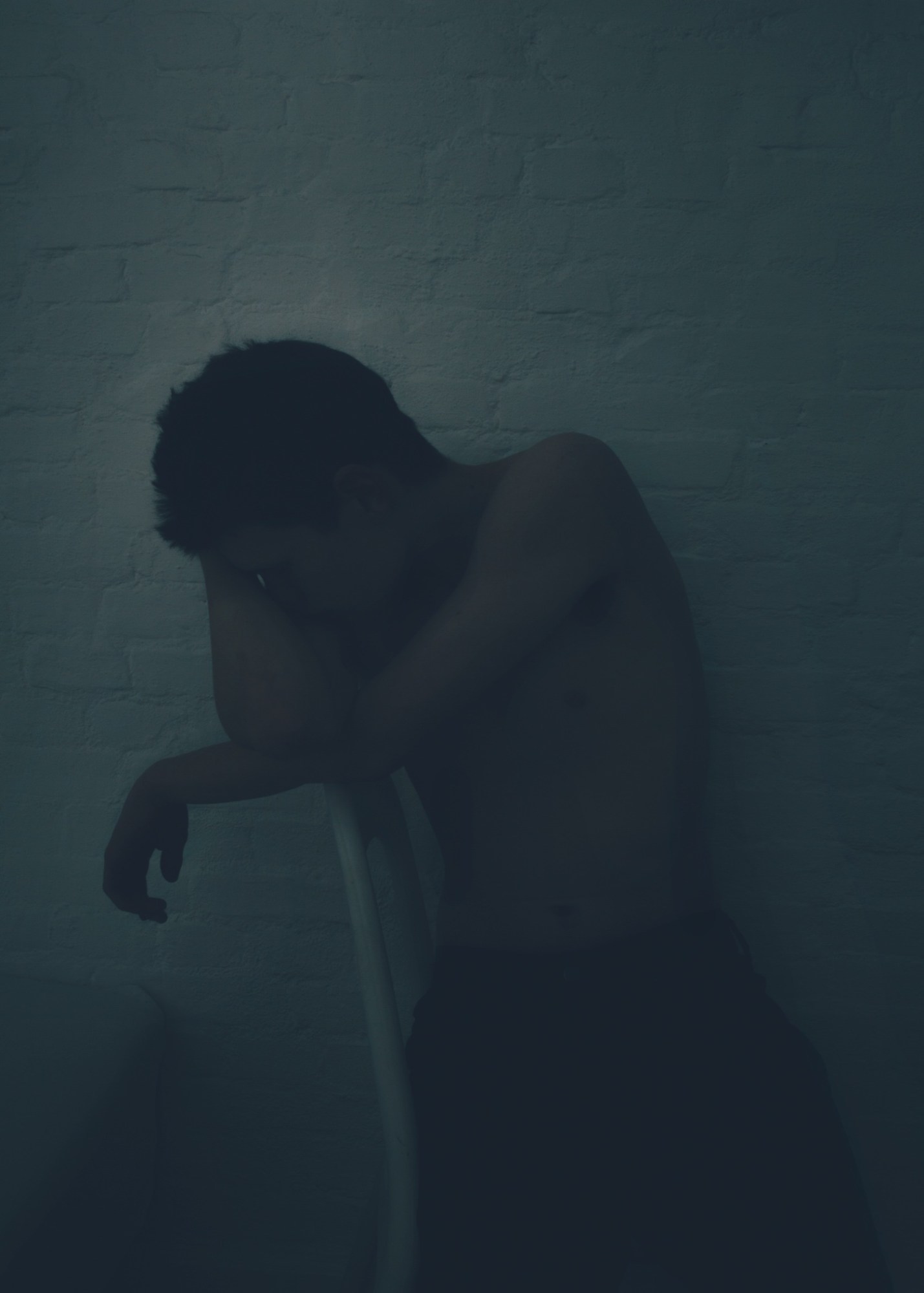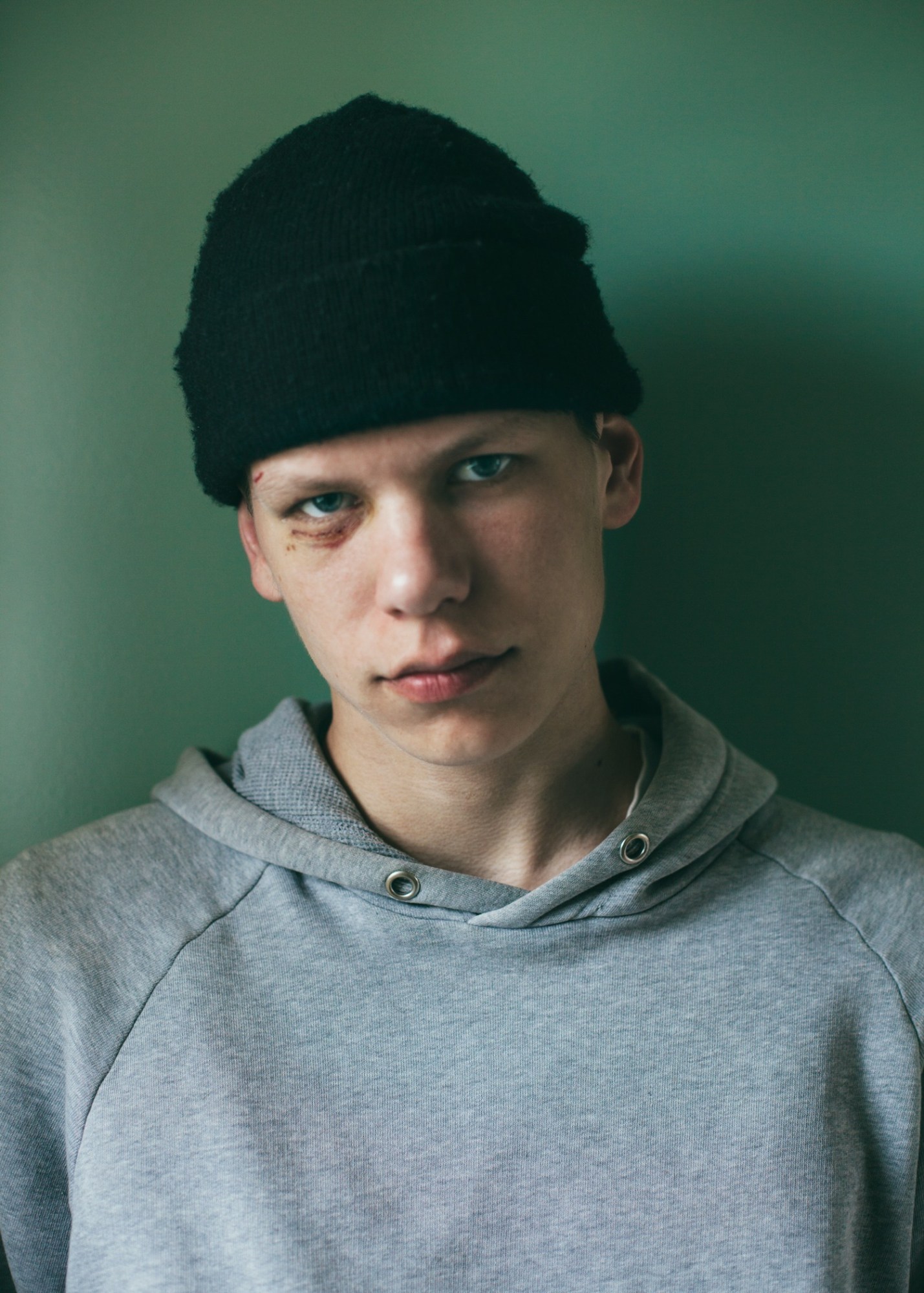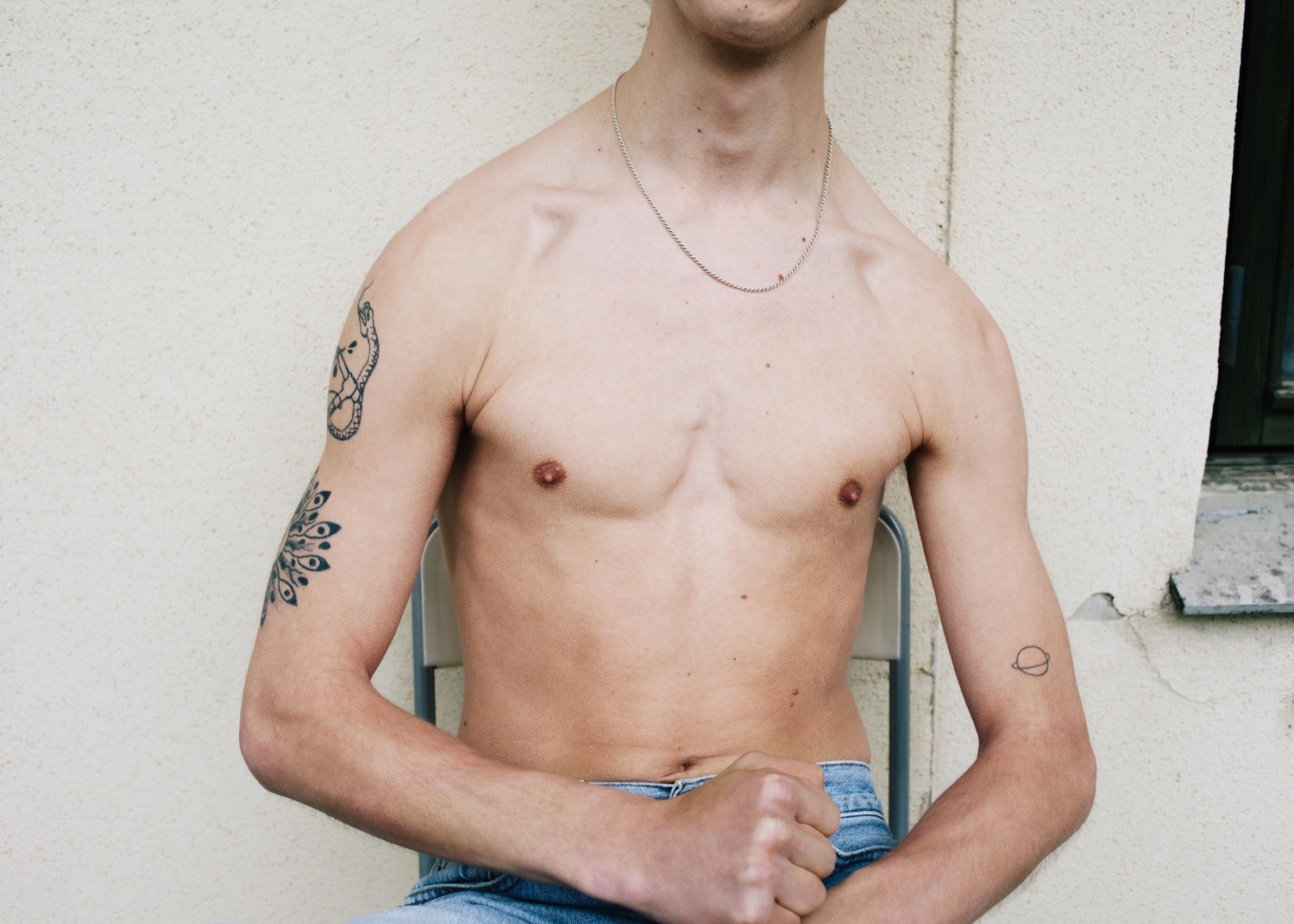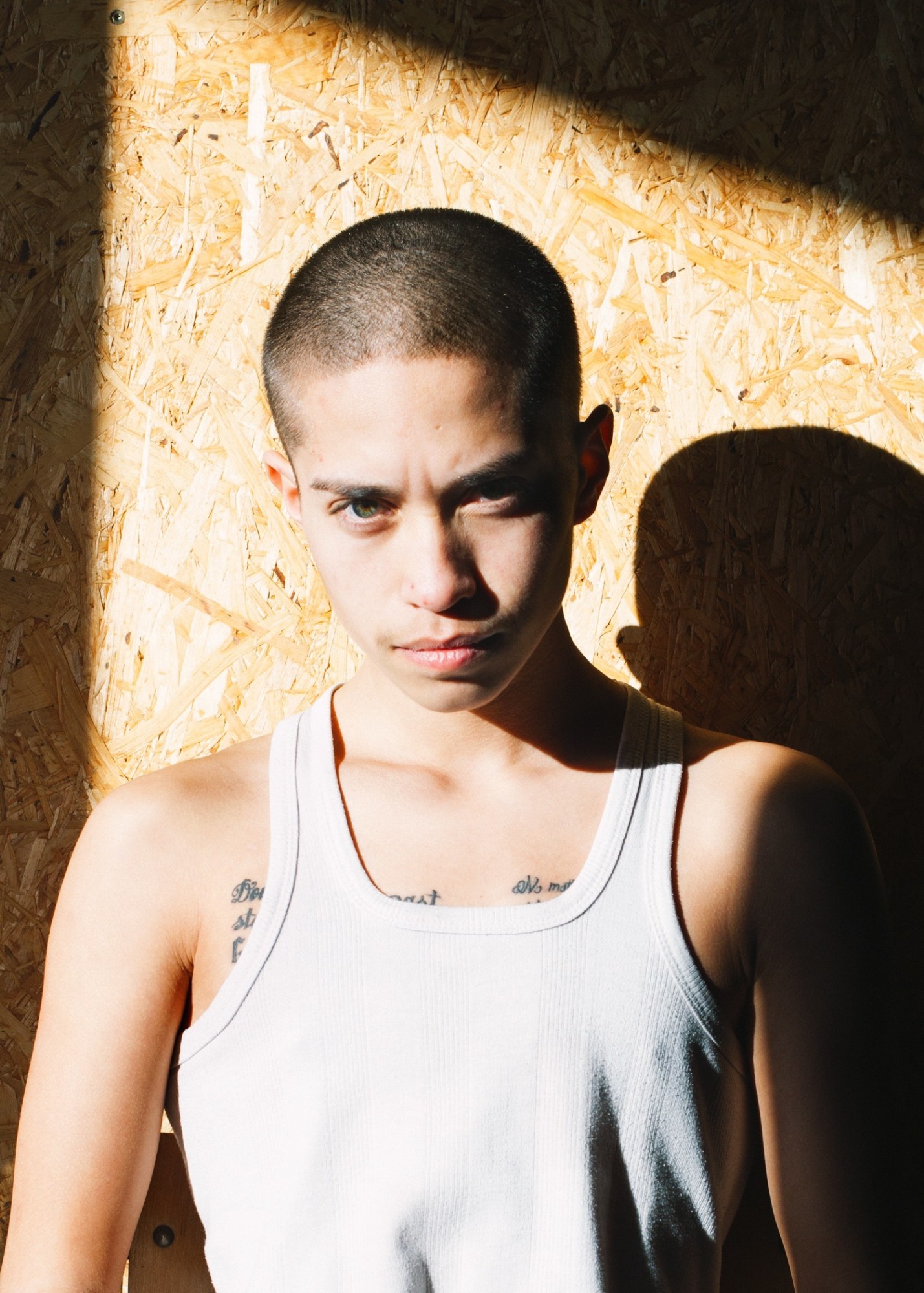Presently, Stefanie Moshammer is in sticky Rio de Janeiro, braving the heat to explore and photograph life inside the city. But before departing for South America, the globetrotting Moshammer traveled to Denmark to photograph boys standing on the brink between restless adolescence and adulthood. At once a quest for freedom and a resolution to responsibility, the series — titled Young Gods — interrogates the age of self-discovery.
“The series shows eight boys in Aarhus and Copenhagen, Denmark. When I photographed them, the youngest one was 17, the oldest was 23,” Moshammer writes from Rio. “I met them at night. One of them was sitting next to me, inhaling helium balloons. He looked so peaceful, even though his mind seemed to be on fire. His name is Mathias, he was 19 at that time. Basically, he is enjoying life to the maximum right now. Enjoying, because he has no serious responsibilities, no so-called obligations. And that’s where freedom and excess starts.”
As i-D exclusively reveals Young Gods, we caught up with Moshammer to find out more about the boys she photographed in bedrooms and bars. “Does it actually still exist,” Stefanie asks, “a pure young human being — an unspoiled mind — that doesn’t care about fitting into a civilized form?”

What are the ideas or questions that ignited this project?
Growing up is a process everyone goes through — some different than others — and there are certain things we all must encounter and discover at some point or another. Young Gods is a document of a young male generation in Denmark and an exploration of adolescence. It deals with the issue of self-absorption and the observation of the photographer — me, the female. All of them are in the age of searching and finding their raison d’être.

Did you need to do any persuading in order to shoot them?
There was no convincing needed. I became good friends with some of them and we got along really well. Sometimes I felt more like a psychologist than a photographer. I’m very interested in the human mind and there is something very divine about them, even though they are far away from any “innocence.”

What are their interests and passions? What are their fears and frustrations?
What they are experiencing right now is all an emotion. They have their own cult and ritual practices; some of them quit school, some of them are in school, some work, some just try to enjoy life to the max. Through my lens, these boys are restless souls searching for the essence in life. It’s an expression of freedom and a confusing time of experimentation and self discovery that makes them feel weak and strong at the same time. They’re somewhere between suffering and pleasure, curiosity and expedition. It is important to be aware, though, that grouping people together by age, race, or gender does not help us to understand them further as individuals. Each of the boys was different, but they also had some similarities.

In addition to photographs, the series also features handwritten scraps of paper. One seems to be a punk manifesto of sorts: “fuck the system, fuck the police…” The other is quite simple: “Love, Hate, Anger.” Why did you choose to include this writing?
I asked all of them to write down their thoughts and their feelings. “Fuck the system, fuck the police…” was written by Lukas — he was the most anarchic of them all. When he handed me the paper, he had just gotten back from hospital with a cast on his hand. He told me he got into trouble with the police and they pushed him down, so his hand broke. His letter was written as a response. “Love, Hate, Anger,” was written by William — he was probably the most vulnerable one. His girlfriend just broke up with him and he wrote me a letter the day after. The last sentence was, “Love, Hate, Anger” — as simple as it can be and as true as it is when you fall in love and get disappointed.

These scraps of paper are the mesh that brings the story alive. The more visuals you bring together, there’s a greater chance that the viewer can make unexpected connections — something beyond your control. As a photographer, I can’t deny my influencing role. There is no anonymity or absence behind the camera because I choose the decisive moment. My tableaux are created from reality, but I’m the creator.

Is youth the best time of our lives?
I don’t know if youth is the best time, but it seems definitely to be the most challenging time. When else can you lose and celebrate yourself, thinking the whole world revolves around you alone? The more grown up you become, the more you are forced to fit into a shape. There must be a specific reason for you to exist, because “wasting” time is not accepted in a world like ours. There is almost no space for emptiness that leads to some completely unknown conclusion. Sometimes the future becomes a worry and we all wish we were younger.
Credits
Text Emily Manning
Photography Stefanie Moshammer
